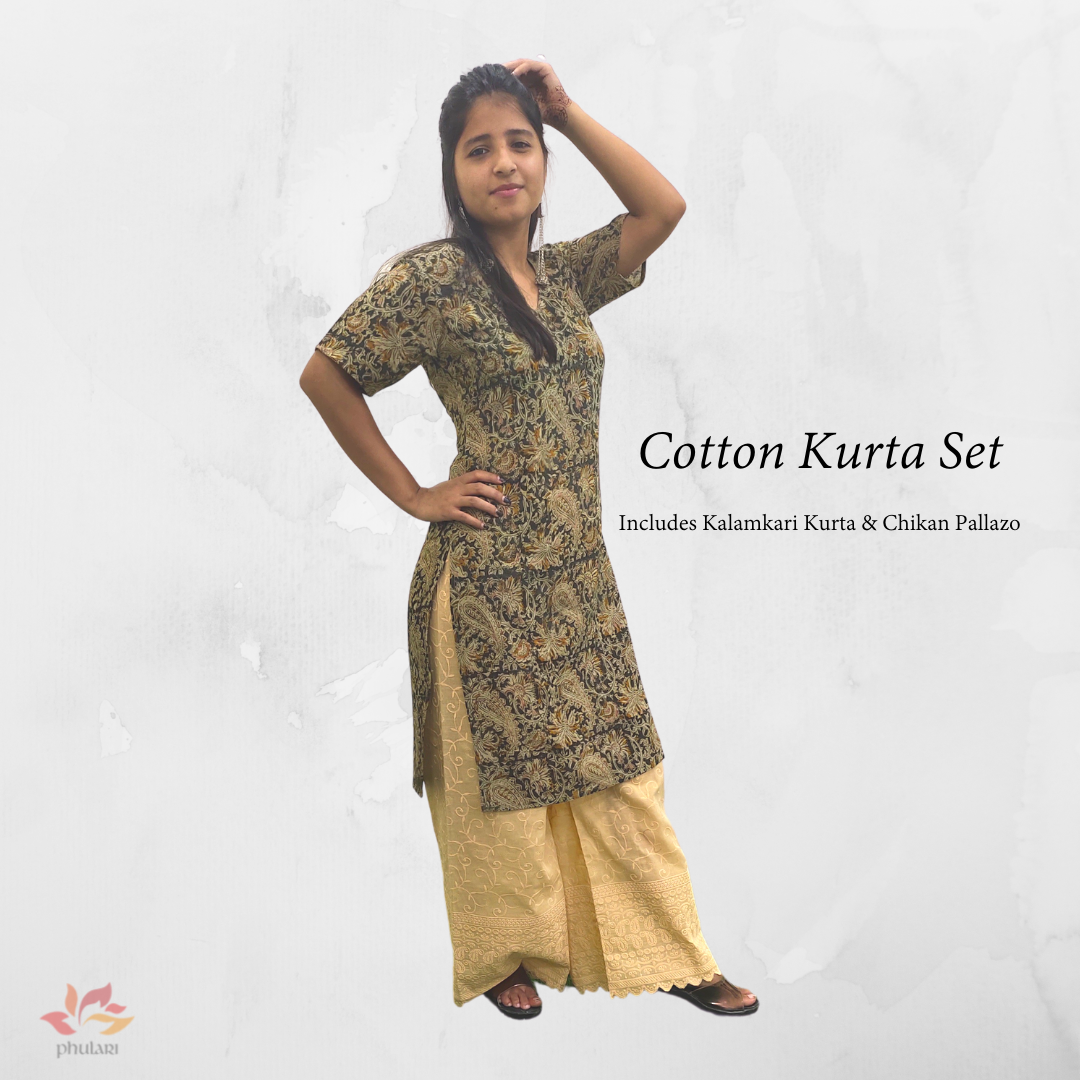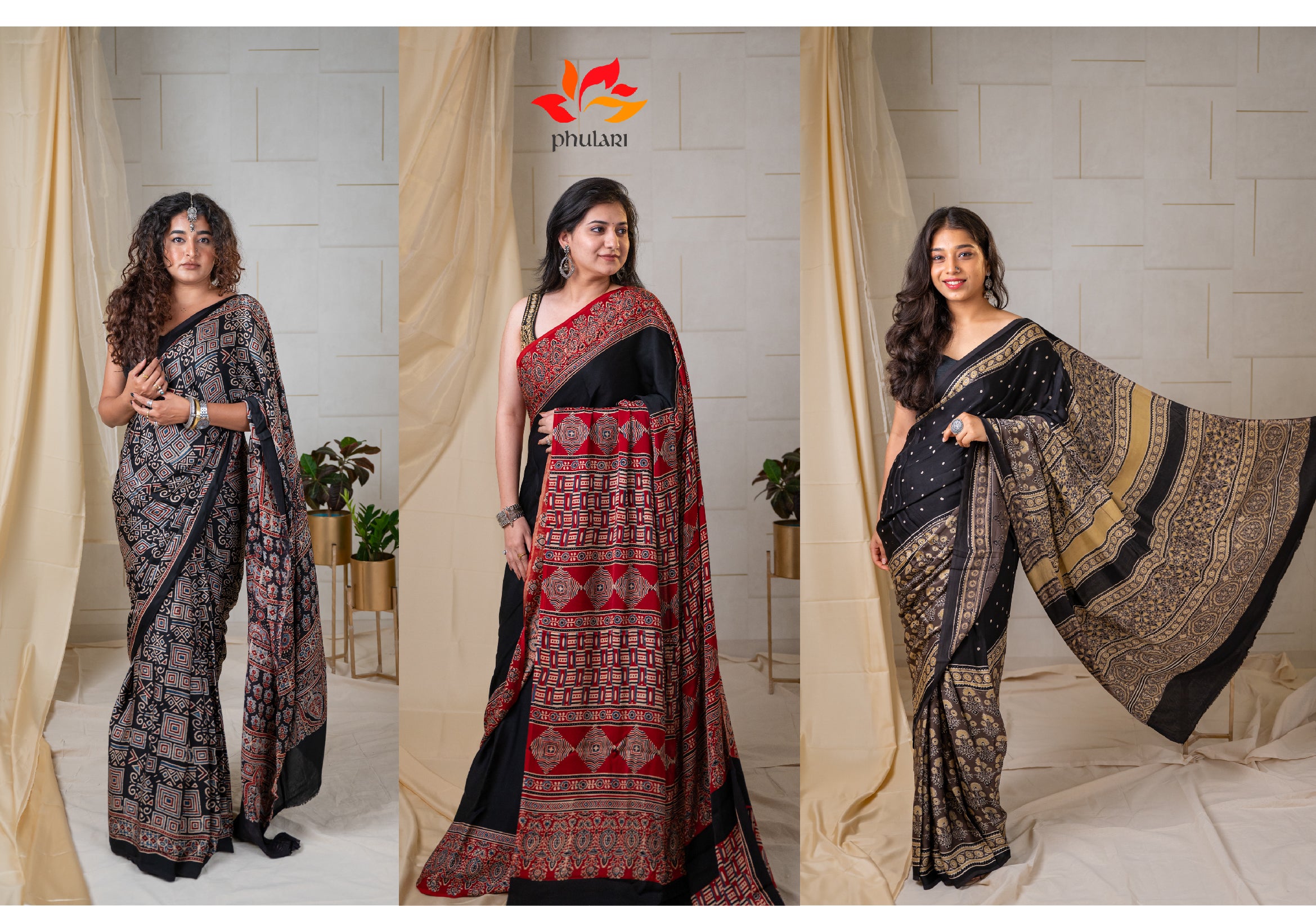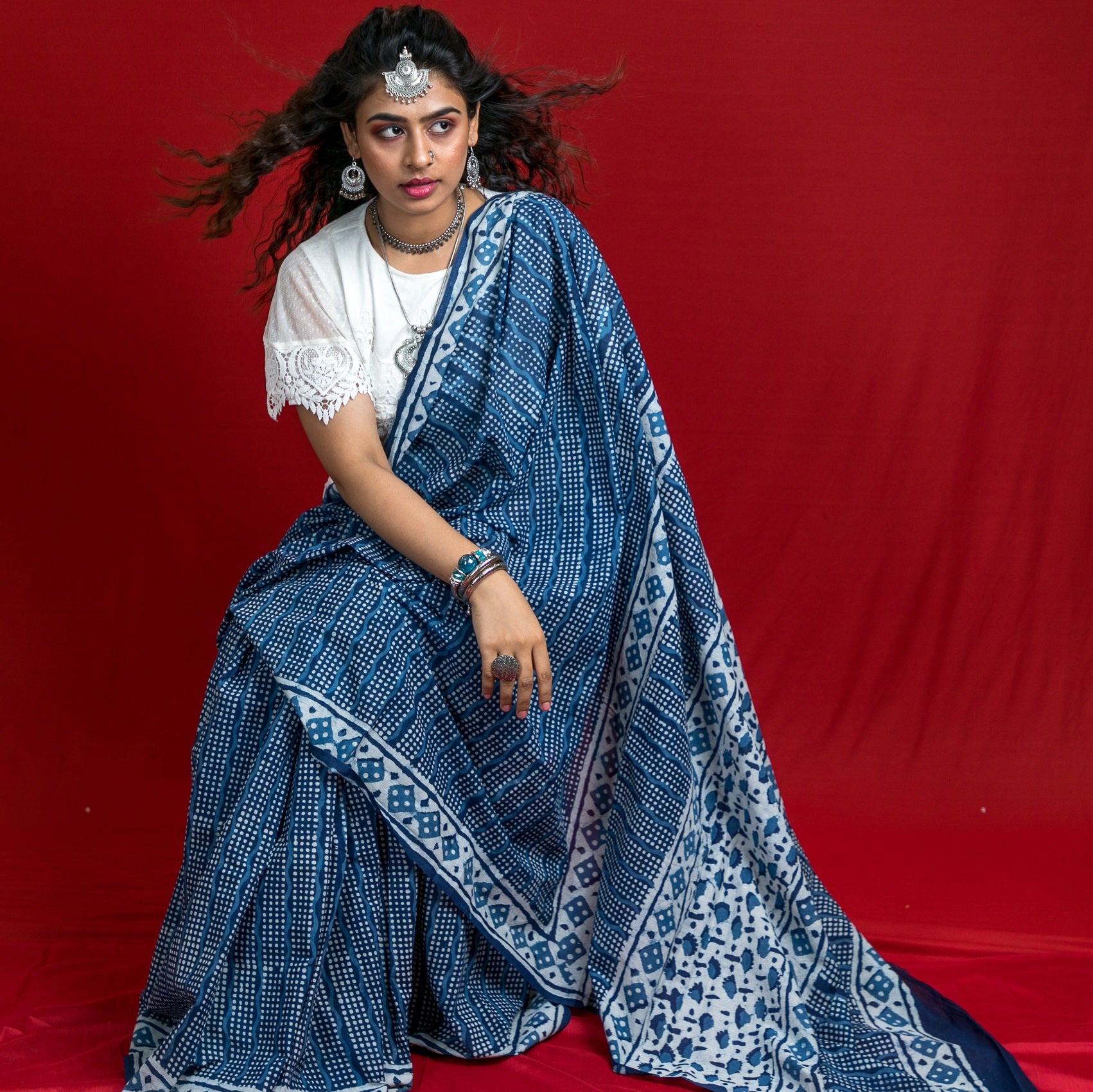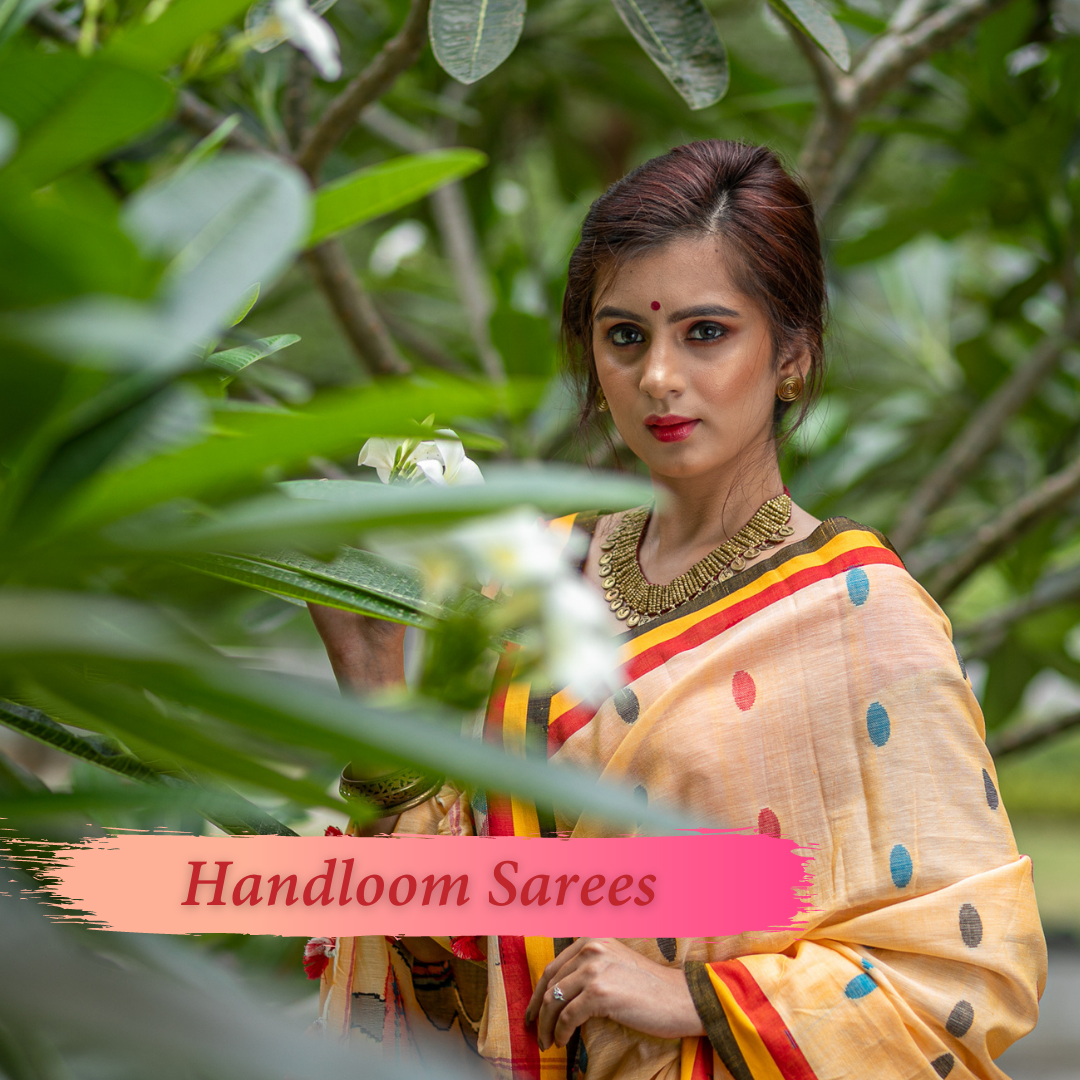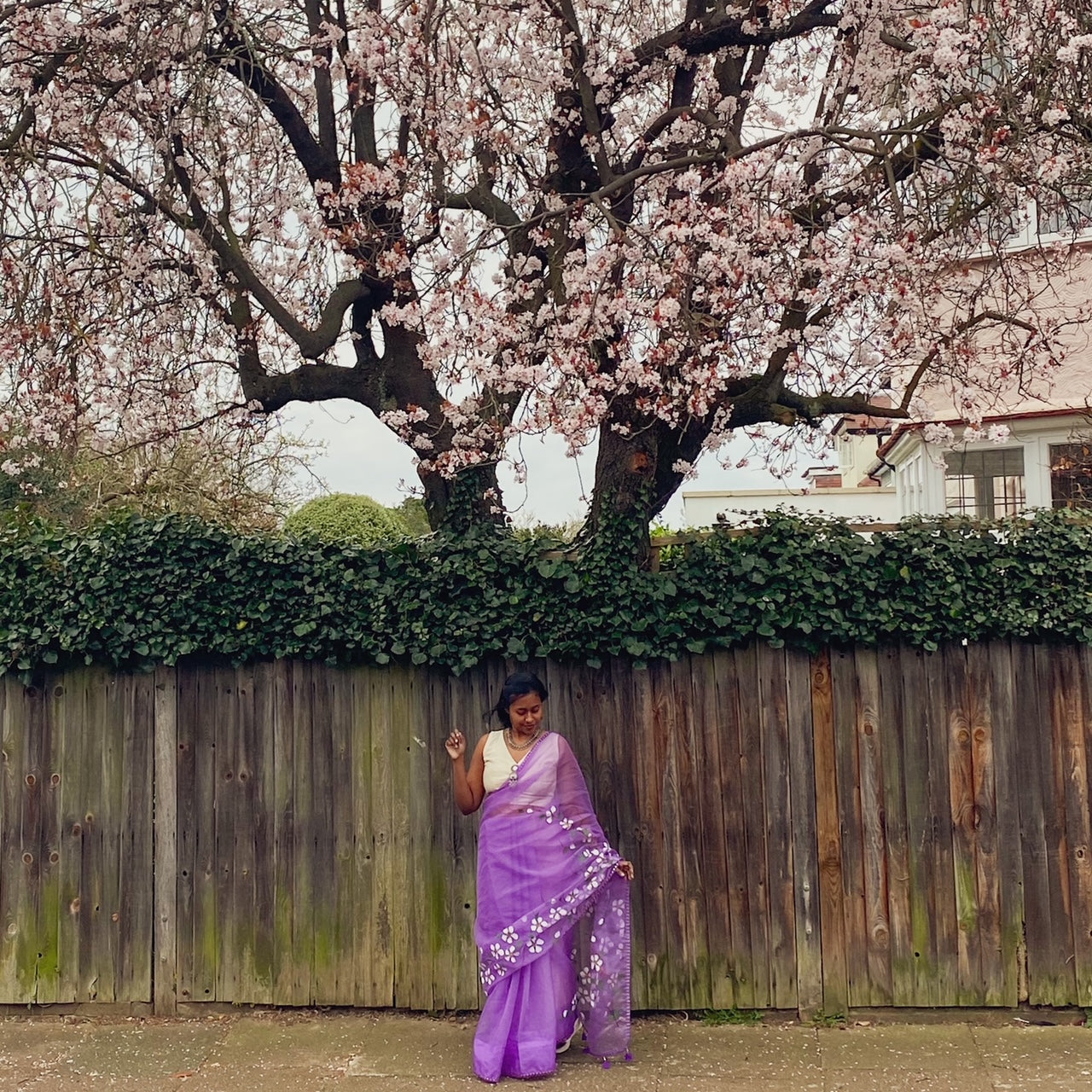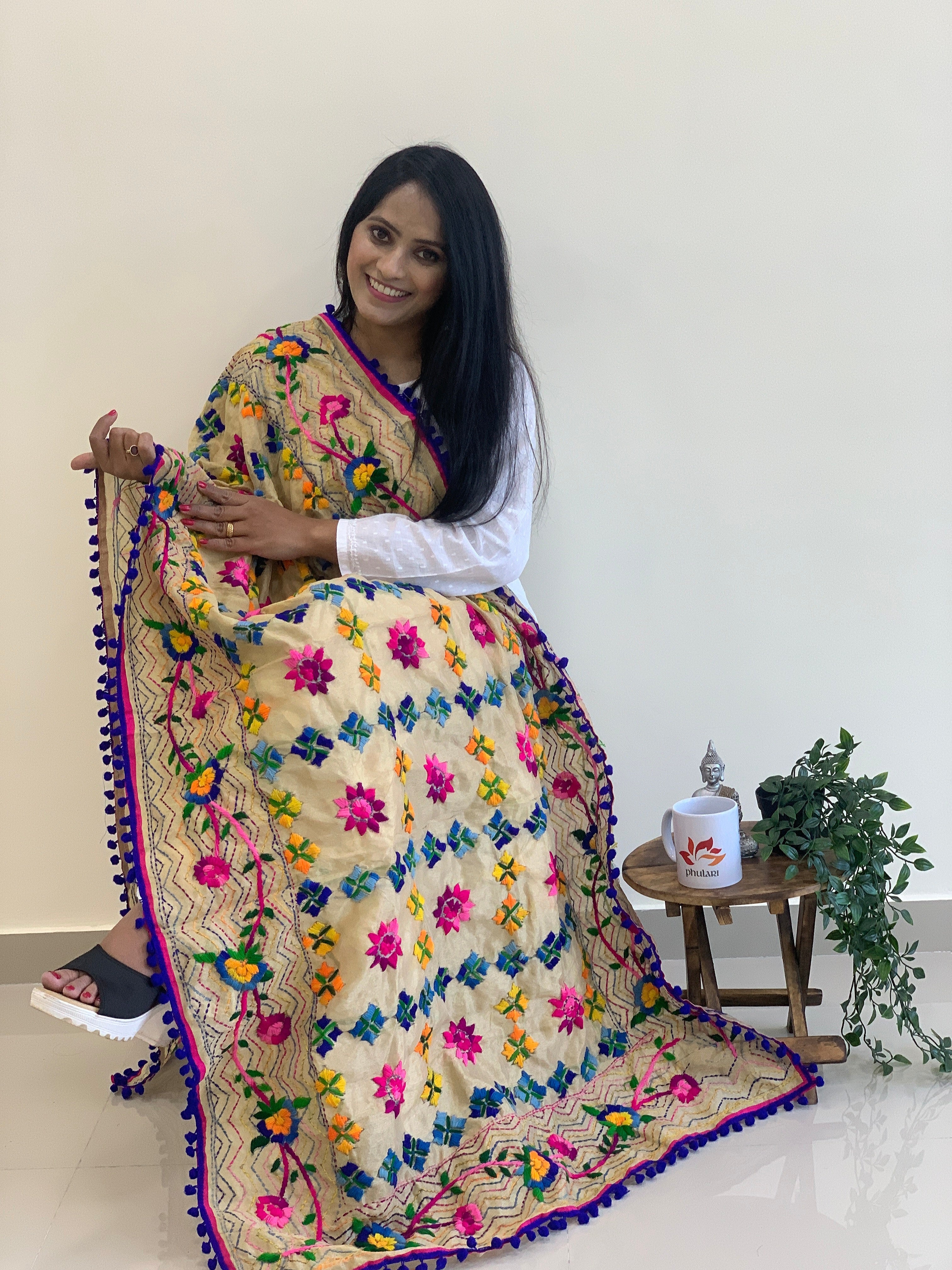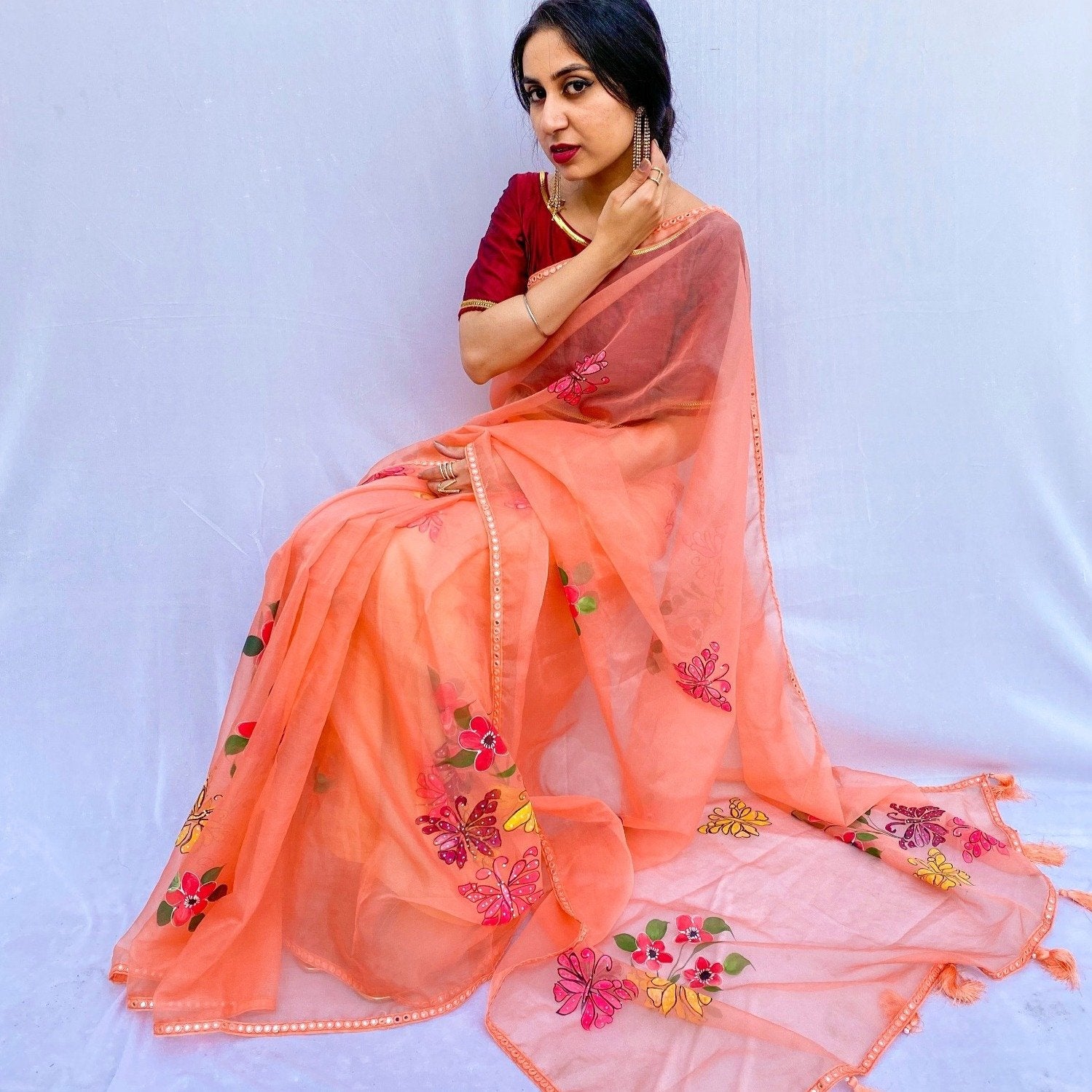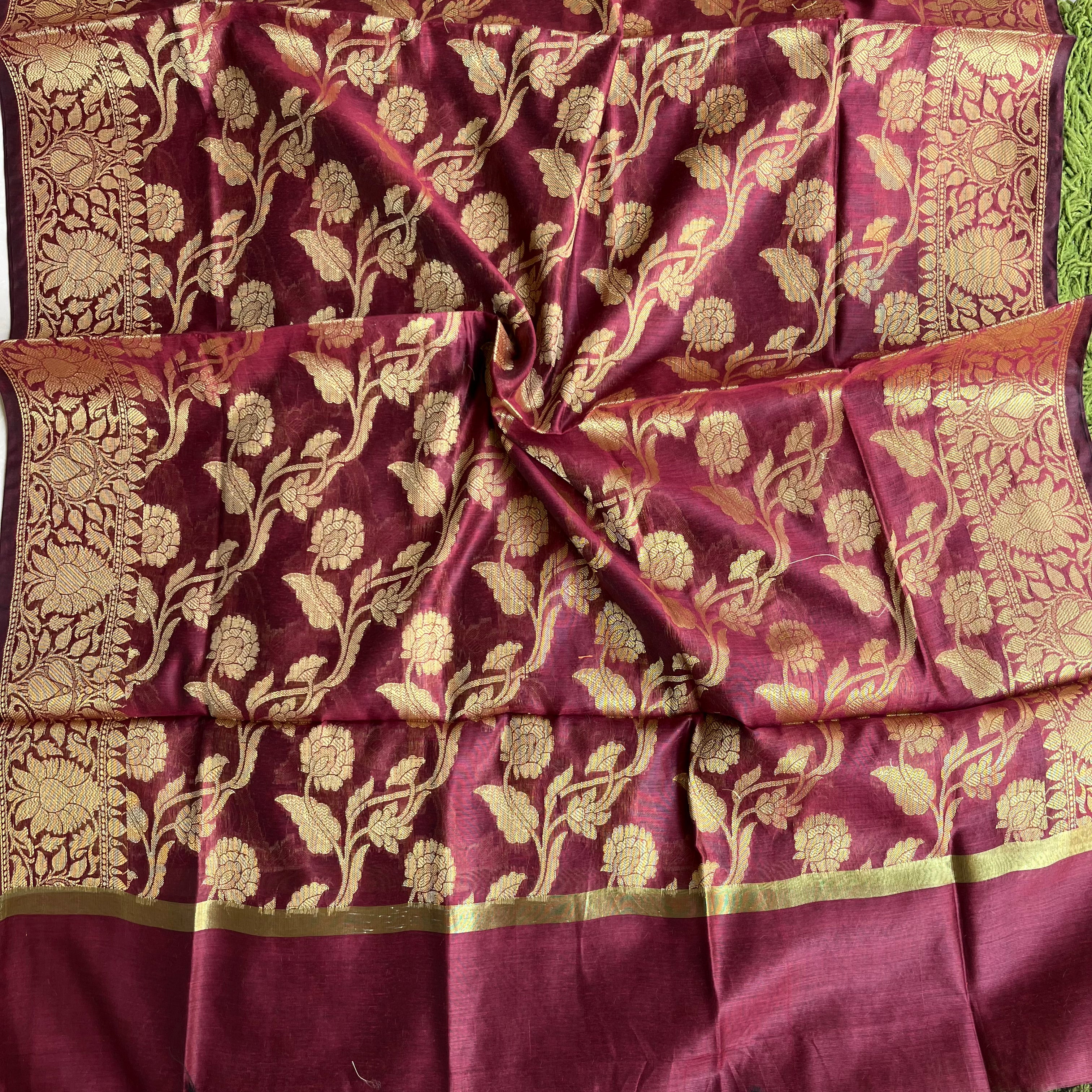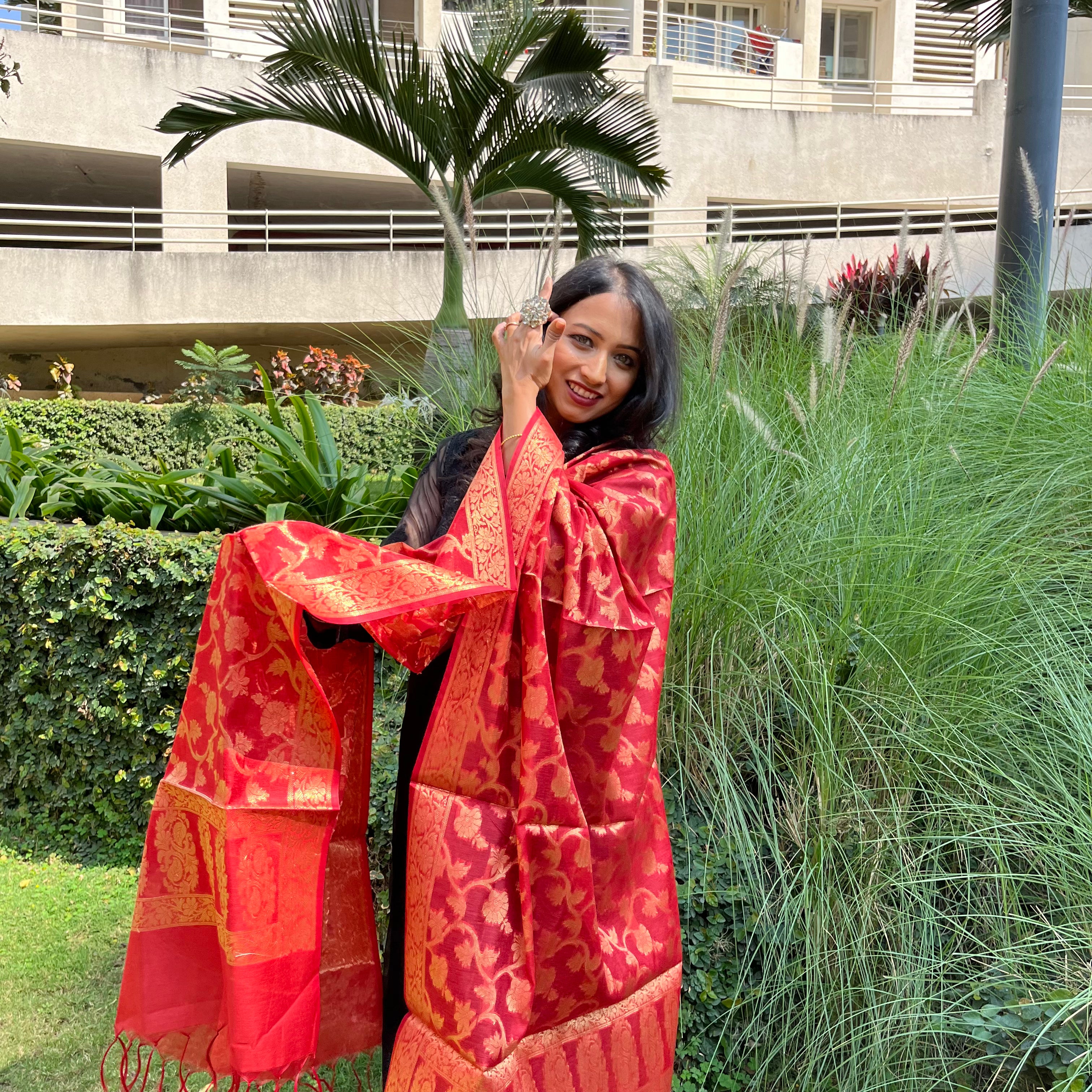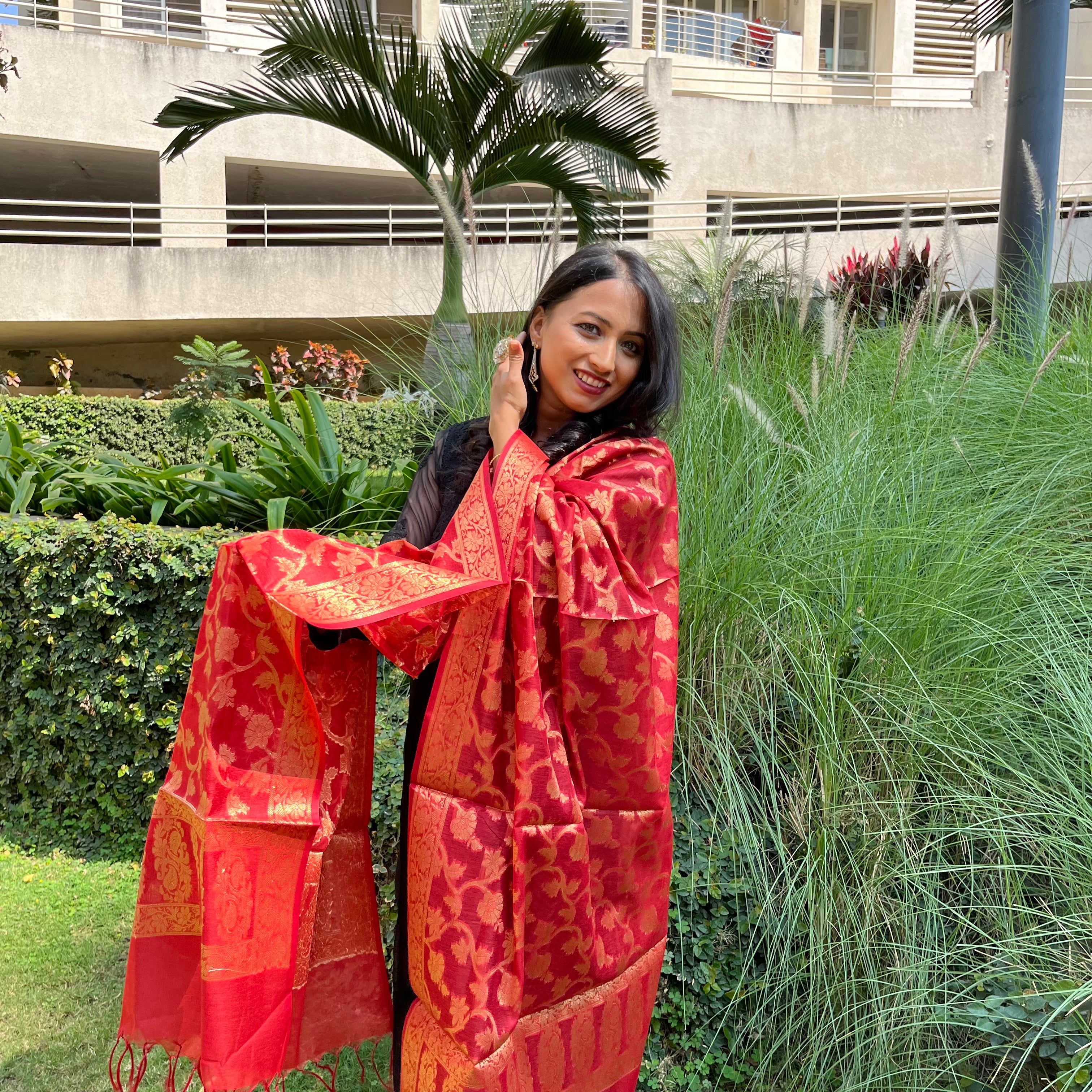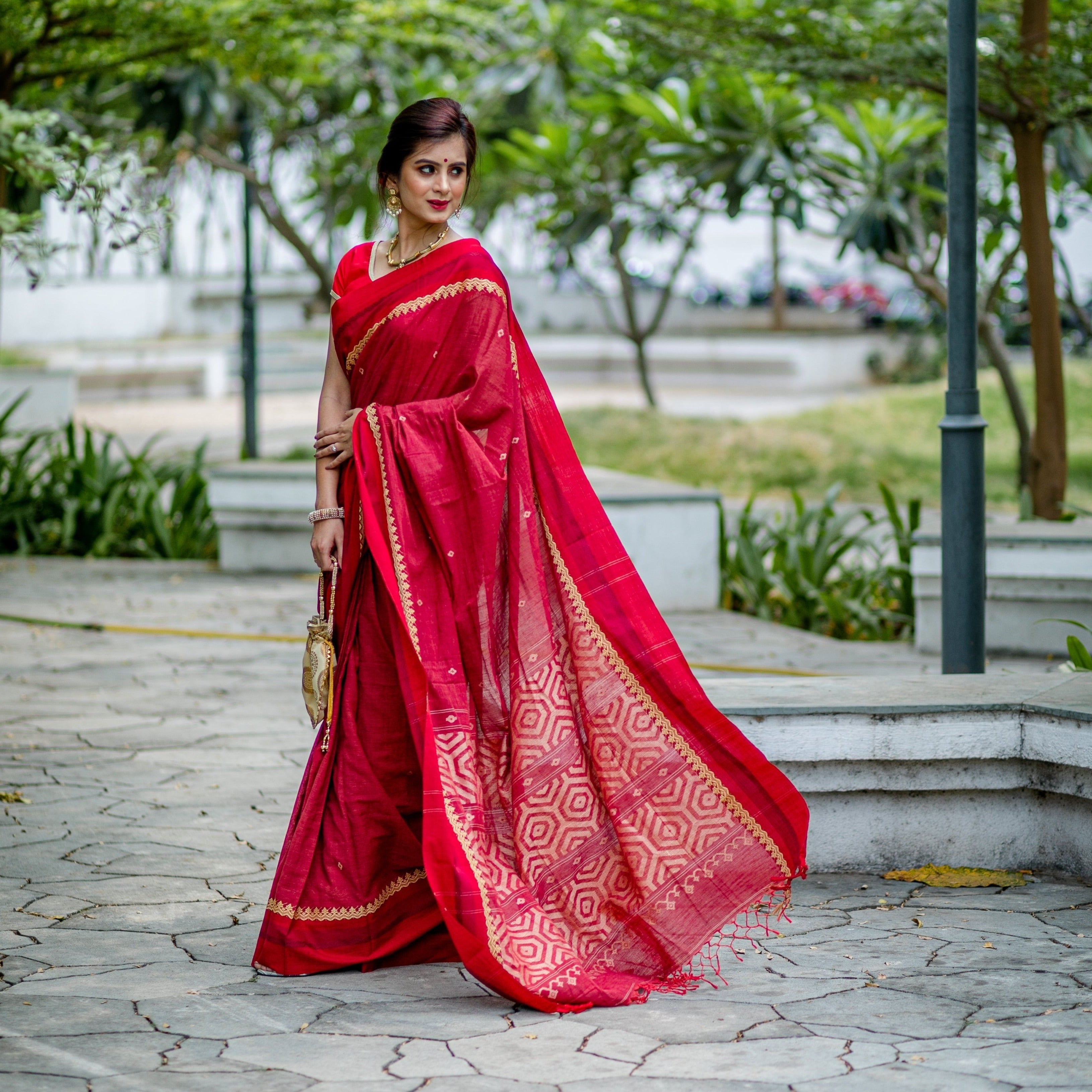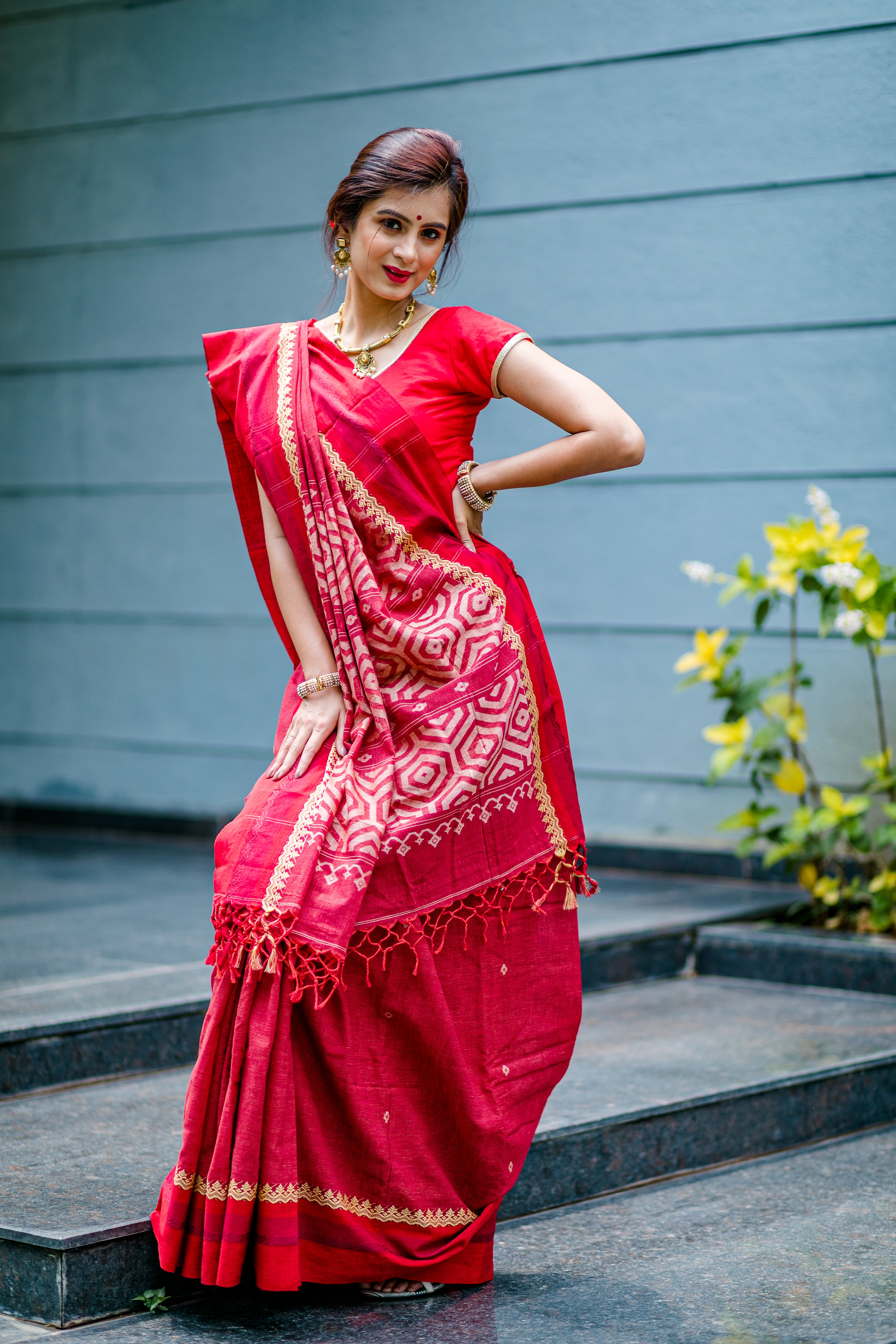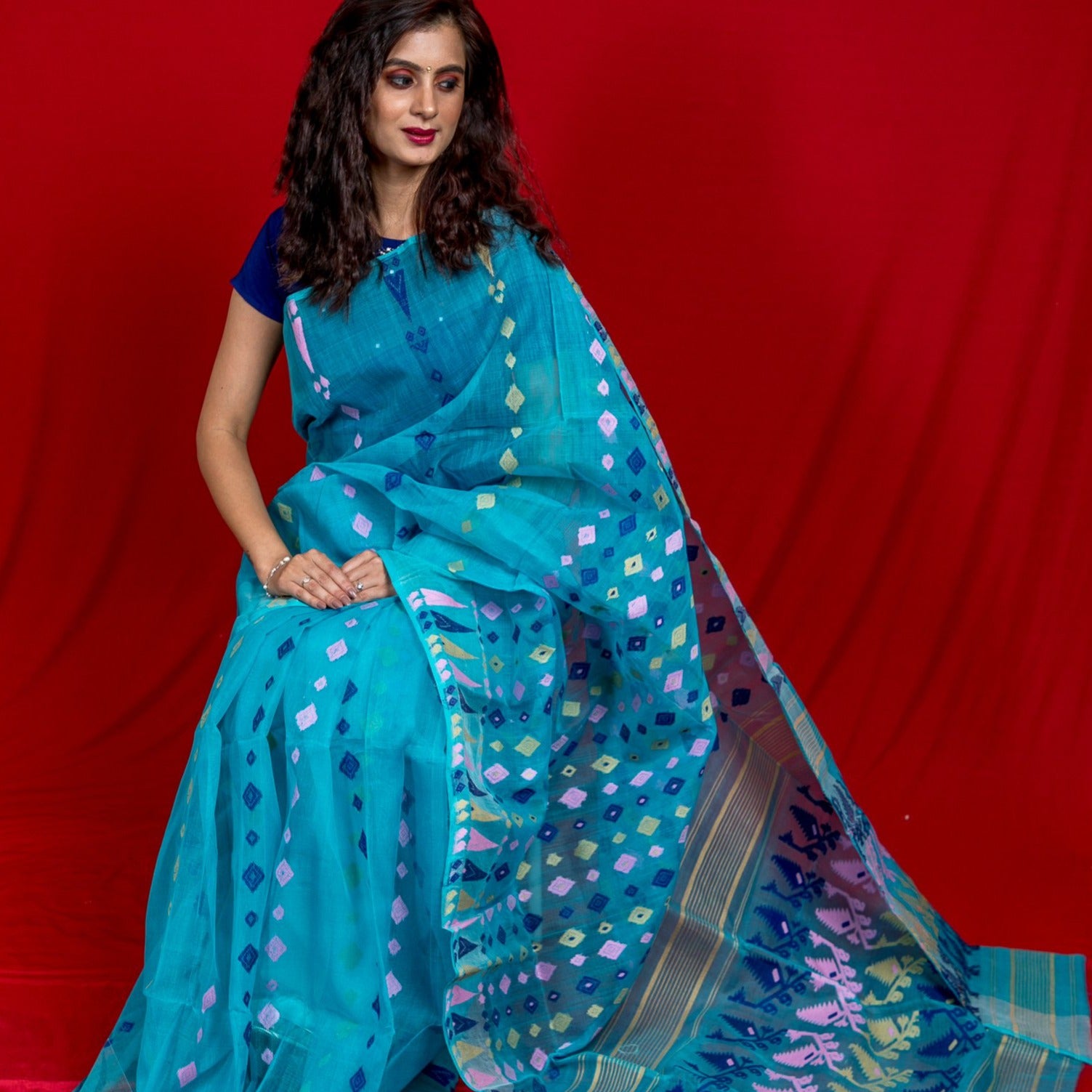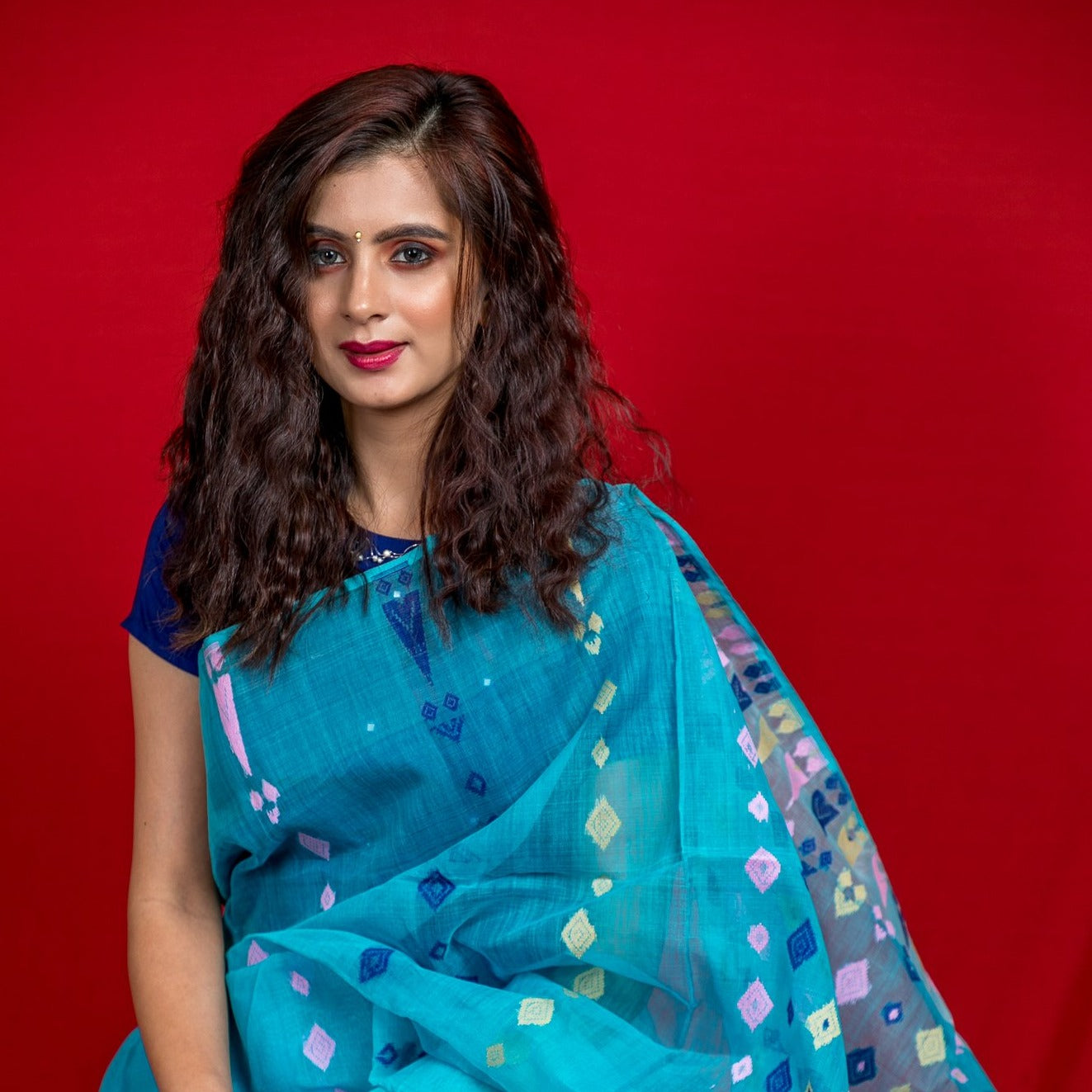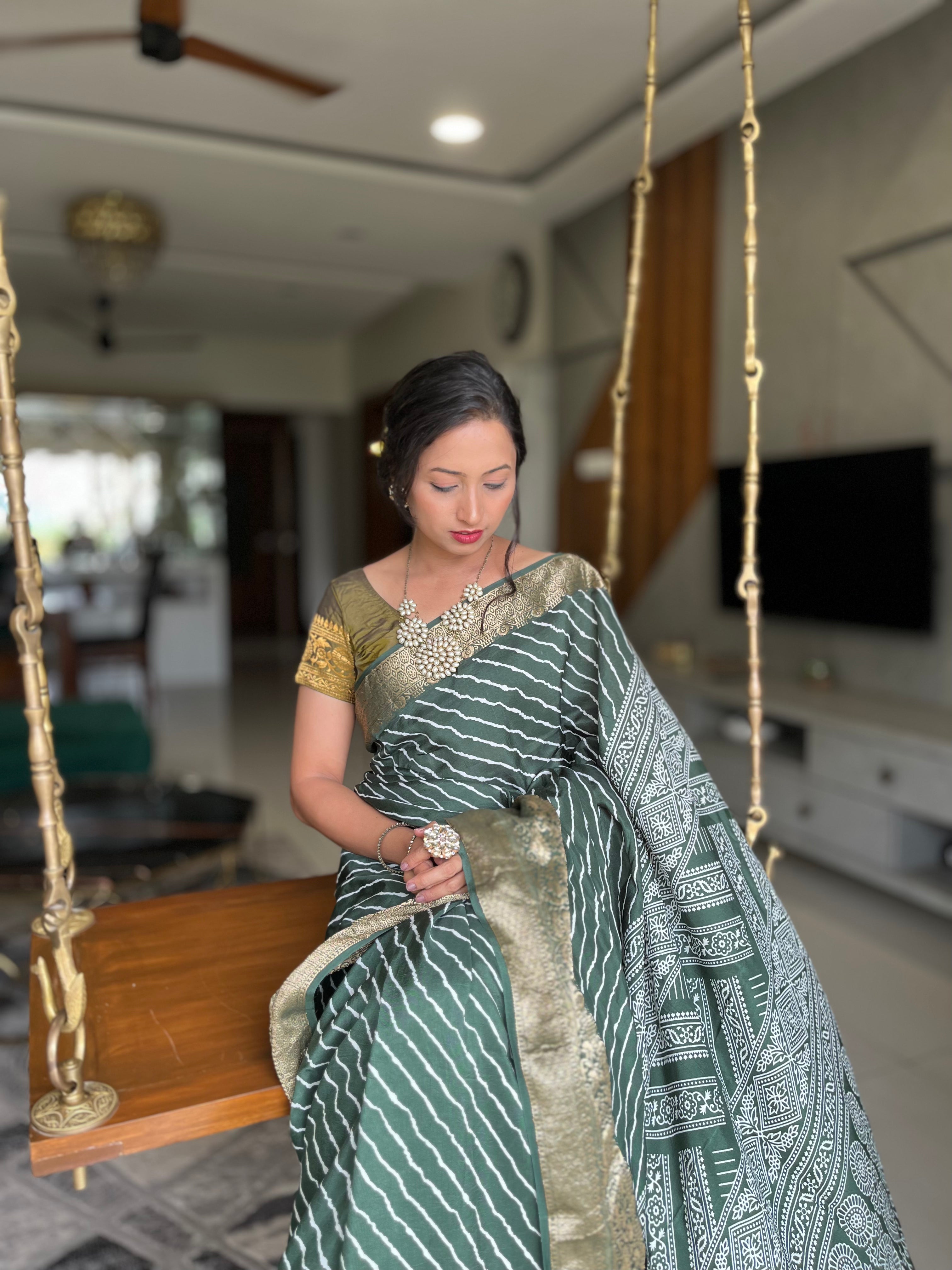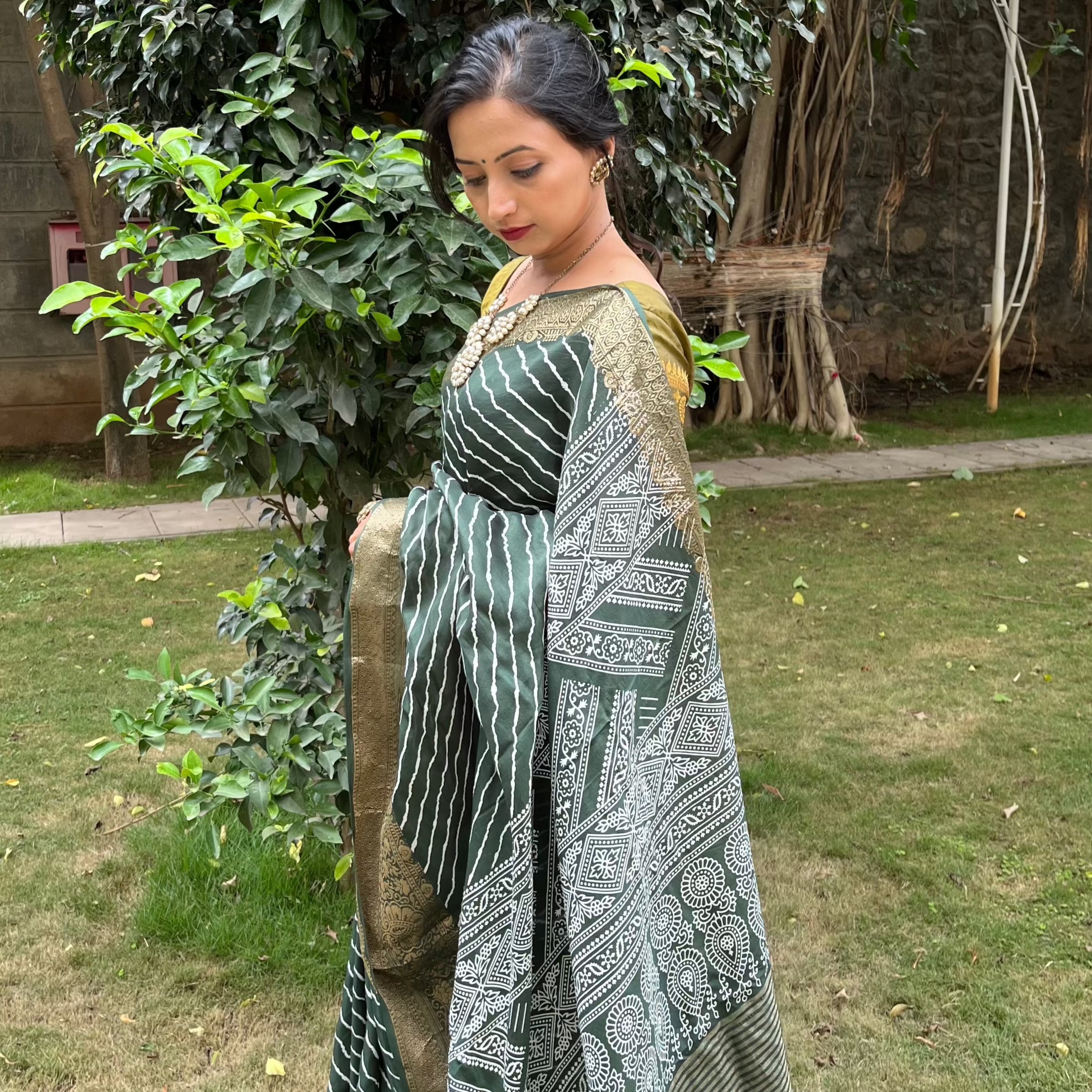Kalamkari is a nature inspired artistry from India, often speaking a story and tying beautiful motifs together like a dream. Kalamkari - art of the “kalam” or pen, finds its origins in the southern parts of Indian. Hand-block printing is an ancient skill that requires knowledge along with precision, keen eye to details and skilled hands. Among the different printing techniques that are spread across the states of India, one such timeless art is the hand-block Kalmakari, which is brought to life by the artisans combining the intricacies of fabrics, motifs, blocks and dyes used.
Kalamkari is an art form known for its patterns that flow through various themes. This beautiful art is produced in the southern states of India, Andhra Pradesh and Telangana.
The famous Kalamkari consists of two techniques that are named after the place of practice - Srikalahasti and Machilipatnam. The words are derived from villages in the state of Andhra Pradesh. The former involves hand-drawn and hand-painted motifs, while the latter is carried out by using hand-blocks. Both art forms draw inspiration from the natural surroundings, and often depict deities or processions.
In this article, we take a deep dive in the Pedana (village where this art form is practiced) Hand block Kalamkari.
The beginning of the flourishing Hand-block Kalamkari art
It all began during the reign of the Mughul and Golconda dynasties. This art form rose to popularity, and the craftsmen were highly praised for their skillfulness and immense knowledge exhibited in the making of Kalamkari products. Furthermore, during the British Raj, Kalamkari became a favorite in many European countries.
Machilipatnam was a bustling port during the 15th-17th century. During this period, the trading for Kalamkari products experienced a high. It was also the focal center for the production of hand-block Kalamkari as water, an important requisite was available in this village.
The process in making a hand-block Kalamkari products
The handblock Kalamkari is a 7 Step process. The most amazing part is the creation of natural dyes as that is what makes these products so beautiful, earthly and everlasting. Teakwood is used for making the different blocks.
- The fabric is bleached naturally. This takes 3 days to complete.
- Once the bleaching is completed, Myrabolan treatment is done. This is done to remove any type of impurities.
- Once the cleansing of the fabric is completed, the first color printing takes place. All the colors are stored in large wooden blocks and covered with cotton or jute cloth.
- It is then washed.
- Once washed it is boiled.
- Post boiling, the second filling of colors takes place. This filling is done with the help of the wooden blocks of which the patterns are done. The fabric is kept for drying.
- Once this is completed, the final wash and dry of the product takes place before it is ready to dispatch.
The difference in motifs seen in hand-block Kalamkari
Unlike hand-painted Kalamkari, where religious motifs or mythology is widely used in the production of beautiful ethnic apparel, hand-block Kalamkari doesn't incorporate them. The reason behind this is that the textiles produced at Machilipatnam were mainly for mass production. So, the designs formulated in hand-block Kalamkari included flowers, trees, creepers, and stylised plants that were more generic. But with time. to meet the preferences of the people deities are also a part of the hand-block Kalamakari.
The pricing of hand-block Kalamkari products
Handblock Kalamkari products are more often slightly lower prices than Pen Kalamkari owing to-
- Time taken: Time taken for hand block printing is lesser than hand painted products. Also the blocks can be re-used to create fabrics on a larger scale in one go.
- Probability of error: Often hand painted kalamkari is prone to human error, and a single splash of colour can damage the product. Hence, the irregularities of painting are higher, and also the costs are higher for Pen Kalamkari products.
The fabric, borders, number of blocks used all dictate the final price of the product.
Today there are many machine made or screen printed Kalamkari products available that cost a fraction of original Kalamkari. They simply use the motifs, however can be easily differentiated based on the finish of the product. They also use industrial dyes that look brighter, however fade away with washing over time. The beauty of natural dyes is that over time, the colour doesn't fade away but the product becomes even more appealing.
The dyes used in hand-block Kalamkari
The dyes that are used by the rural artisans for printing are extracted from vegetables, fruits, flowering plants, and minerals. The colors seen in Kalamkari attires are black, blue, red, and yellow. These natural dyes are prepared using alum so that during the later process, the color doesn't run while washing. The more common colours - rust red, black, brown, chrome yellow, lime green, jade blue. At Phulari, we offer only natural dyed handblock kalamkari products,
Pen Kalmakari may be done with pigment colours. The easiest way to identify whether its natural or chemical dye is to touch the fabric. Chemical dyes usually make the fabric rough and thick. The hand block kalamkari fabrics, hence, are super soft and the natural dyes feel very comfortable and smooth.
Phulari’s hand-block Kalamkari collection
After digging through the history and the making process, I’m sure you all are curious to explore the hand-block Kalamkari attires. These are going to leave you awestruck. There is something in store for all handcraft lovers and women looking to experiment with their dressing while sporting the Indian culture. Each is subtle yet elegant, comfortable, and chic. So sit back, and scroll down to know more about Phulari’s recommendations that will make an ideal closet upgrade.
Keep your look lively with our cotton hand-block Kalamkari kurta fabric and dupatta. It is a perfect wear to the beat summer heat by ensuring top comfort. Made of cotton, a fabric that is breathable and versatile, this kurta set can be worn either for a daytime event or an evening celebration. It comes in different base colors with intricately hand-block printed motifs inspired by nature on the entire fabric. Since this set does not include a bottom, you have multiple choice in the way you can style it. This includes pairing it with either a long flared skirt, palazzos, straight pants, or leggings. Choose your bottom depending on where you are headed. Don’t forget to accentuate your overall look with either heavy or minimal jewelry, traditional juttis, and a bag. This attire will make a valuable addition to your ethnic collection and fetch you second glances as you make your appearance.
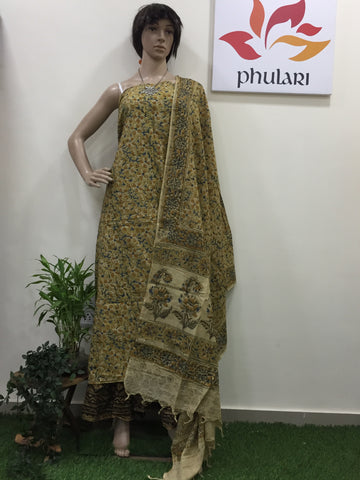
Soft and smooth, hand-block Kalamkari dupatta is an ideal accessory for all ethnic attires. Clubbing it with your ethnic attire is sure to uplift your look and fetch second glances. It is neither too bright nor too subtle, but just eye pleasing and appealing.

A pleasant, elegant art form, hand-block Kalamkari is a perfect attire for formal events and everyday wear. Rouse your spirits with our chennur silk hand-block Kalamkari sarees. The sarees come in different alluring patterns and colors, sure to give you a fresh look. Accessorising these kinds of sarees with jhumkas or oxidised jewelry complements your look just perfectly.
You can also try draping this Kalamkari saree in a dhoti style or front pallu style, or even a pant style. These styles will add extra charm with a pinch of exclusiveness.

There is no better accessory than an alluring dupatta. It is just the perfect item to elevate your outfit. Apart from being an accessory, today, a dupatta can be styled into a top too. So, women and girls, it’s time to add a dupatta that speaks about our traditional art form, the chennur silk hand-block kalamkari dupatta. It is soft to the skin, comfortable to wear, and easy to carry. Phulari.com has a range of chennur silk dupattas that showcase striking patterns hand-blocked printed using natural dyes. Be it a casual hangout or traditional festivity, carrying this dupatta can work wonders.

Today, the use of Kalamkari art forms spans clothing and lifestyle essentials. The modernization and innovation of technology are, however, taking away the true essence of hand-block printing. Some artisans are using this method as it is less time-consuming and cost-efficient. But, also there are artisans from the Pedana village who use the traditional methods in the production of these maleficent attires.
You can explore on Phulari.com the exquisite hand-block Kalamkari collection made solely by natural dyes by heading to https://phulari.com/collections/dreamy-hand-block-kalamkari

